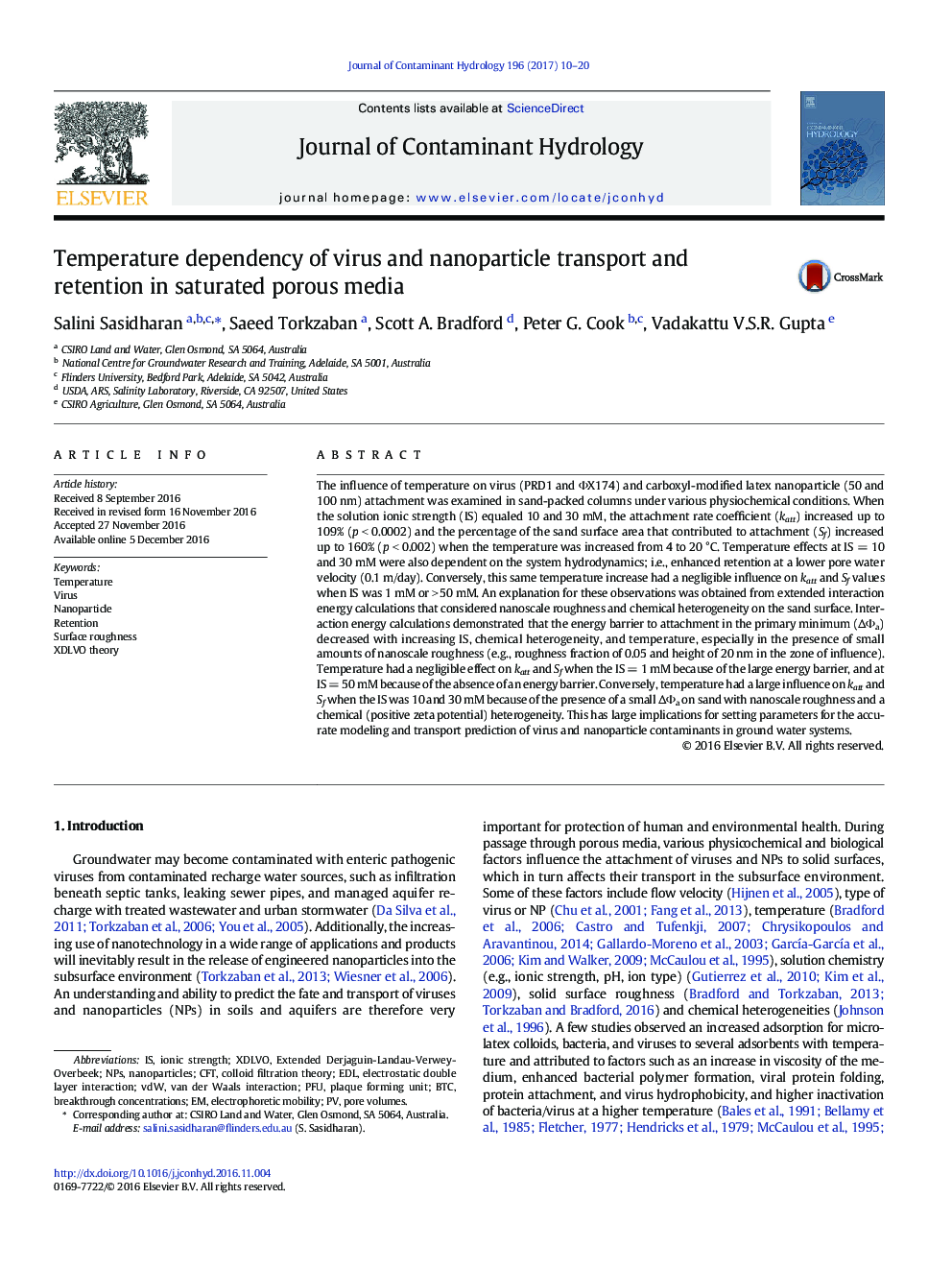| کد مقاله | کد نشریه | سال انتشار | مقاله انگلیسی | نسخه تمام متن |
|---|---|---|---|---|
| 5765913 | 1627015 | 2017 | 11 صفحه PDF | دانلود رایگان |
- Virus and latex NP retention dramatically increased with temperature at intermediate IS.
- Temperature had negligible influence on NP retention when the IS was 1Â mM or 50Â mM.
- XDLVO calculations that included nanoscale heterogeneity explained these observations.
- Simulations accurately described the temperature dependency of retention parameters.
The influence of temperature on virus (PRD1 and ΦX174) and carboxyl-modified latex nanoparticle (50 and 100 nm) attachment was examined in sand-packed columns under various physiochemical conditions. When the solution ionic strength (IS) equaled 10 and 30 mM, the attachment rate coefficient (katt) increased up to 109% (p < 0.0002) and the percentage of the sand surface area that contributed to attachment (Sf) increased up to 160% (p < 0.002) when the temperature was increased from 4 to 20 °C. Temperature effects at IS = 10 and 30 mM were also dependent on the system hydrodynamics; i.e., enhanced retention at a lower pore water velocity (0.1 m/day). Conversely, this same temperature increase had a negligible influence on katt and Sf values when IS was 1 mM or > 50 mM. An explanation for these observations was obtained from extended interaction energy calculations that considered nanoscale roughness and chemical heterogeneity on the sand surface. Interaction energy calculations demonstrated that the energy barrier to attachment in the primary minimum (âΦa) decreased with increasing IS, chemical heterogeneity, and temperature, especially in the presence of small amounts of nanoscale roughness (e.g., roughness fraction of 0.05 and height of 20 nm in the zone of influence). Temperature had a negligible effect on katt and Sf when the IS = 1 mM because of the large energy barrier, and at IS = 50 mM because of the absence of an energy barrier. Conversely, temperature had a large influence on katt and Sf when the IS was 10 and 30 mM because of the presence of a small âΦa on sand with nanoscale roughness and a chemical (positive zeta potential) heterogeneity. This has large implications for setting parameters for the accurate modeling and transport prediction of virus and nanoparticle contaminants in ground water systems.
110
Journal: Journal of Contaminant Hydrology - Volume 196, January 2017, Pages 10-20
